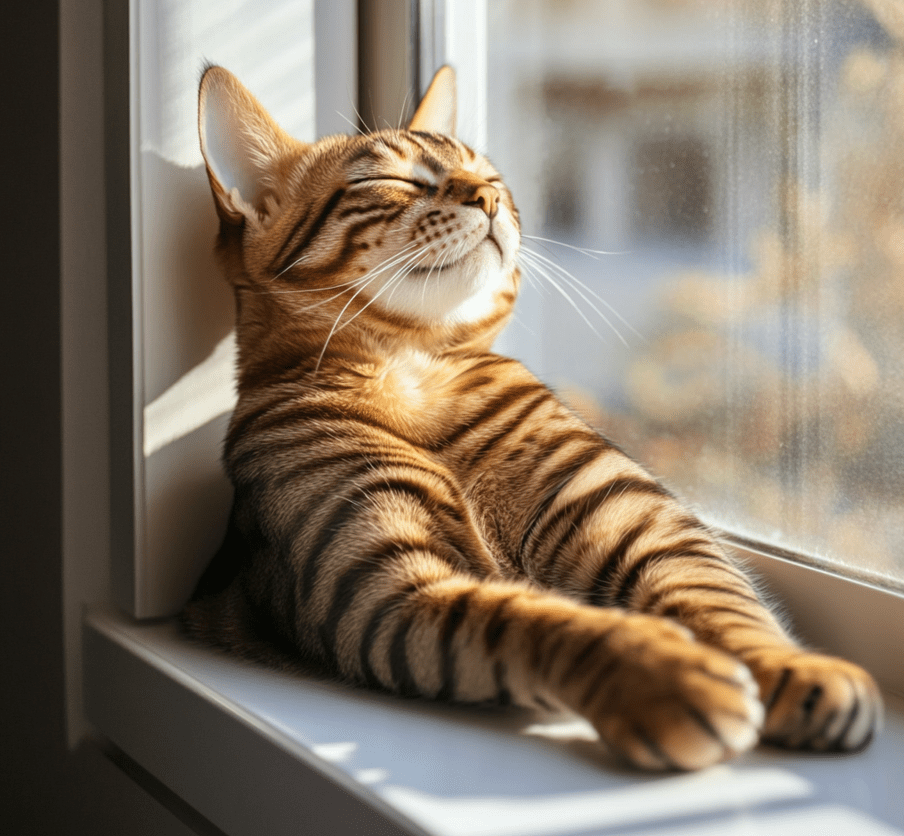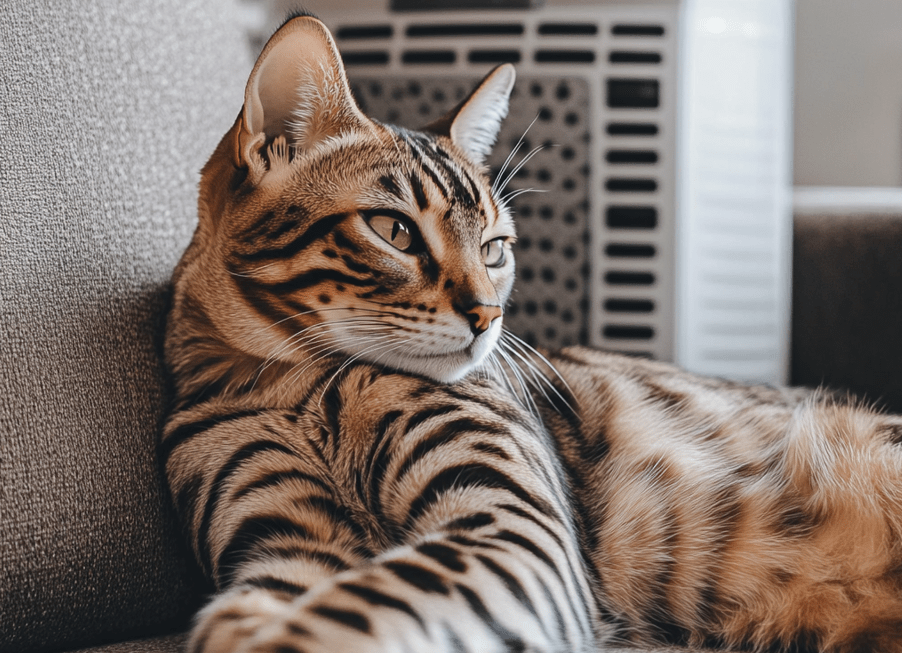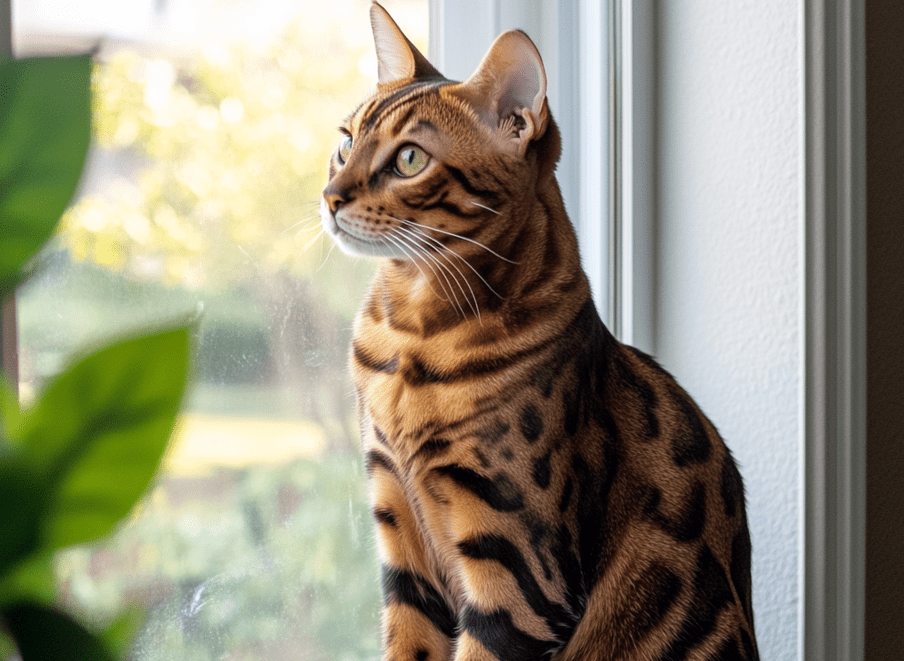
Bengal cats, with their striking spotted coats and energetic personalities, are cherished companions for many pet owners. However, like all cats, Bengals are susceptible to certain health conditions, including chronic renal failure (CRF), also known as chronic kidney disease (CKD). Managing chronic renal failure in Bengals requires a dedicated approach to diet, care, and lifestyle adjustments to ensure these feline friends live comfortable, fulfilling lives. This article provides a comprehensive guide to understanding CRF in Bengals, offering practical diet and care tips to support their health and well-being.
Understanding Chronic Renal Failure in Bengals
Chronic renal failure is a progressive condition where a cat’s kidneys gradually lose their ability to filter waste products from the blood, regulate electrolytes, and maintain proper hydration. In Bengals, CRF is often diagnosed in older cats, but it can affect younger ones as well, especially if they have a genetic predisposition or underlying health issues.
What Causes CRF in Bengals?
The exact cause of CRF in Bengals isn’t always clear, but several factors may contribute, including:
Genetics: Some Bengals may inherit kidney issues, such as polycystic kidney disease (PKD), which can lead to CRF over time.
Infections: Repeated urinary tract infections (UTIs) or kidney infections can damage kidney tissue.
Toxins: Exposure to toxins like antifreeze, certain plants, or medications can harm the kidneys.
Age: As Bengals age, their kidney function naturally declines, increasing the risk of CRF.
Other Conditions: Hypertension, diabetes, or hyperthyroidism can strain the kidneys and contribute to CRF.
Symptoms of CRF in Bengals
Recognizing the signs of CRF early can make a significant difference in managing the condition. Common symptoms include:
1.Increased thirst and urination
2.Weight loss and reduced appetite
3.Lethargy or decreased activity
4.Vomiting or diarrhea
5.Poor coat quality
6.Bad breath (often with a chemical or ammonia-like odor)
If you notice these symptoms in your Bengal cat, consult a veterinarian promptly for a diagnosis. Blood tests, urine analysis, and imaging (like ultrasound) can confirm CRF and assess its severity.
The Role of Diet in Managing CRF in Bengals
Diet is a cornerstone of managing chronic renal failure in Bengals. A tailored diet can slow disease progression, reduce symptoms, and improve your cat’s quality of life. Here’s how to approach feeding a Bengal with CRF.
Key Dietary Considerations
Low Phosphorus
Phosphorus buildup can worsen kidney damage. Diets low in phosphorus help reduce the strain on the kidneys. Look for prescription renal diets formulated with restricted phosphorus levels.
High-Quality Protein
While protein restriction was once standard, current research emphasizes high-quality, easily digestible protein in moderate amounts. This supports muscle maintenance without overloading the kidneys. Avoid low-quality proteins found in some commercial foods.
Controlled Sodium
Low-sodium diets help manage blood pressure, which is critical since hypertension is common in cats with CRF. Bengals with CRF benefit from foods that balance sodium to prevent fluid retention.
Increased Omega-3 Fatty Acids
Omega-3s, found in fish oil, have anti-inflammatory properties that may slow kidney disease progression. Consult your vet about adding omega-3 supplements to your Bengal’s diet.
Adequate Hydration
Bengals with CRF often struggle to conserve water, leading to dehydration. Wet food is ideal because it provides moisture, encouraging hydration. You can also add water or low-sodium broth to their meals.
Prescription Renal Diets vs. Homemade Diets
Veterinarians often recommend prescription renal diets (e.g., Hill’s k/d, Royal Canin Renal Support) because they’re specifically formulated for cats with CRF. These diets balance nutrients to support kidney health while being palatable for picky Bengals.

If you prefer a homemade diet, work closely with a veterinary nutritionist. Homemade diets must be carefully balanced to avoid deficiencies or excesses that could harm your Bengal. Common ingredients include:
1.Lean meats (chicken, turkey, or fish) for high-quality protein
2.Low-phosphorus vegetables like zucchini or cauliflower
3.Healthy fats like fish oil for omega-3s
4.Supplements (e.g., B vitamins) as recommended by your vet
Feeding Tips for Bengals with CRF
Small, Frequent Meals: Bengals with CRF may have reduced appetites. Offering small meals throughout the day can encourage eating.
Warm the Food: Warming wet food slightly can enhance its aroma, making it more appealing.
Monitor Weight: Weigh your Bengal regularly to ensure they’re maintaining a healthy weight. Weight loss is a common issue with CRF.
Avoid Treats High in Phosphorus or Sodium: Stick to vet-approved treats or use small portions of their regular food as rewards.
Care Tips for Bengals with Chronic Renal Failure
Beyond diet, comprehensive care is essential for managing CRF in Bengals. These tips focus on creating a supportive environment, monitoring health, and addressing symptoms.

1. Ensure Access to Fresh Water
Hydration is critical for Bengals with CRF. Encourage drinking by:
1.Providing multiple water bowls around the house
2.Using a pet water fountain (Bengals are often attracted to running water)
3.Offering flavored water (e.g., a splash of tuna juice or low-sodium broth, with vet approval)
4.Cleaning water bowls daily to keep them appealing
2. Manage Stress
Bengals are active, intelligent cats that thrive on stimulation, but stress can exacerbate CRF symptoms. Create a calm environment by:
1.Maintaining a consistent routine for feeding, play, and rest
2.Providing safe spaces (e.g., cat trees, cozy beds) where your Bengal can relax
3.Avoiding sudden changes, like rearranging furniture or introducing new pets
Enrichment activities, like puzzle feeders or gentle play with feather wands, can keep your Bengal mentally engaged without overexertion.
3. Regular Veterinary Checkups
Frequent vet visits are vital for monitoring CRF progression and adjusting treatment. Your vet may recommend:
Blood and Urine Tests: To track kidney function (e.g., BUN, creatinine, SDMA levels).
Blood Pressure Monitoring: To detect and manage hypertension.
Weight and Body Condition Scoring: To ensure your Bengal isn’t losing muscle mass.

Depending on the stage of CRF, your vet may prescribe medications, such as:
1.Phosphate binders to reduce phosphorus absorption
2.ACE inhibitors or calcium channel blockers for blood pressure
3.Anti-nausea drugs to improve appetite
4.Potassium supplements if levels are low
4. Subcutaneous Fluids
In advanced CRF, your vet may suggest subcutaneous (sub-Q) fluids to combat dehydration and flush toxins. Administering fluids at home can be daunting, but with training, many owners find it manageable. Here’s how it helps:
1.Rehydrates your Bengal, improving energy and appetite
2.Reduces the workload on the kidneys
3.Can be done 1–3 times per week, depending on your vet’s guidance
Work with your vet to learn the proper technique and monitor your Bengal’s response.
5. Monitor Litter Box Habits
CRF affects urination, so keep an eye on your Bengal’s litter box habits. Look for:
1.Increased urine volume or frequency
2.Straining or discomfort (which could indicate a UTI)
3.Changes in urine color or odor
Use clumping litter to track output, and clean the box daily to encourage use. Bengals are fastidious, and a dirty box may discourage them from urinating.
6. Dental Health
Poor dental health can worsen CRF by introducing bacteria into the bloodstream, which stresses the kidneys. Brush your Bengal’s teeth regularly with pet-safe toothpaste, and schedule professional cleanings as needed. If your Bengal resists brushing, ask your vet about dental diets or water additives.
7. Support Mobility and Comfort
As CRF progresses, Bengals may experience muscle weakness or joint pain. Make their environment comfortable by:
1.Placing food, water, and litter boxes on one level to avoid stairs
2.Providing low-sided litter boxes for easy access
3.Offering soft bedding to cushion joints
Gentle massage or warmth therapy (e.g., a heated pet bed) can also soothe discomfort, but check with your vet first.
Lifestyle Adjustments for Bengals with CRF
Bengals are known for their high energy and curiosity, but CRF may limit their stamina. Adjust their lifestyle to balance activity and rest.
Exercise and Play

While Bengals love to leap and chase, overexertion can stress their kidneys. Opt for short, low-impact play sessions (5–10 minutes) using toys like laser pointers or soft balls. Monitor for signs of fatigue, and let your Bengal rest as needed.
Temperature Regulation
CRF can make Bengals sensitive to cold. Keep their living space warm (around 70–75°F), and provide cozy blankets or heated pads during cooler months.
Bonding and Emotional Support
Bengals are social cats that thrive on interaction. Spend quality time with your Bengal through gentle petting, grooming, or simply sitting together. Your presence can reduce stress and boost their mood.
Advanced Treatments and Emerging Research
For Bengals with severe CRF, advanced treatments may be options, depending on your vet’s recommendations and your resources. These include:
Dialysis: Rare in veterinary medicine but available at specialized centers. It’s typically used for acute kidney injury rather than chronic cases.
Kidney Transplant: A complex procedure offered at select veterinary hospitals. It’s costly and requires lifelong immunosuppression, but it can extend life for some cats.
Stem Cell Therapy: Still experimental, stem cell treatments show promise in regenerating kidney tissue. Research is ongoing, and availability is limited.
Stay informed about new developments by discussing options with your vet or following reputable veterinary research sources.
Emotional Considerations for Owners
Caring for a Bengal with CRF can be emotionally challenging. It’s normal to feel overwhelmed or worried about your cat’s future. Here are ways to cope:
Join Support Groups: Online communities for pet owners with cats in renal failure can offer advice and encouragement.
Celebrate Small Wins: Focus on the moments of joy, like when your Bengal eats well or enjoys playtime.
Seek Professional Help: If the stress feels unmanageable, a counselor or therapist can help you navigate your feelings.
Conclusion

Managing chronic renal failure in Bengals is a journey that requires dedication, knowledge, and love. By focusing on a kidney-friendly diet, proactive care, and a supportive environment, you can help your Bengal cat thrive despite CRF. Regular veterinary guidance, combined with the tips in this guide, will empower you to make informed decisions and provide the best possible quality of life for your feline companion.
For further reading, consult your veterinarian or explore resources from trusted organizations like the American Association of Feline Practitioners or Cornell Feline Health Center. Your Bengal’s health is worth every effort, and with the right approach, you can share many more moments of joy together.




